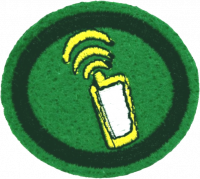AY Honors/Orienteering with GPS/Answer Key
From Pathfinder Wiki
< AY Honors | Orienteering with GPSAY Honors/Orienteering with GPS/Answer Key/en
The printable version is no longer supported and may have rendering errors. Please update your browser bookmarks and please use the default browser print function instead.
Orienteering with GPS
Skill Level
2
Year
2012
Version
14.12.2025
Approval authority
South American Division
1
Have the Orienteering honor.
For tips and instruction see Orienteering.
2
What do the acronyms GPS and DGPS stand for?
3
Know the history of the emergence of GPS and describe it briefly.
4
What are the factors that can interfere with a GPS signal?
5
What is the margin of error for GPS?
6
What is the purpose of a GPS receiver? What types of GPS receivers currently exist? Describe the usefulness of each one.
7
Know how to appropriately handle a GPS. What is the care we should use when handling it?
8
What are the applications of a GPS receiver and what are its limitations?
9
Use a file transfer software and connect it correctly to the GPS.
10
Install maps in the GPS and in the map transfer software.
11
What are the types of maps that we can use in a GPS? Give examples.
12
Demonstrate your ability to:
12a
Turn on a GPS
12b
Find a point in the GPS
12c
Enter a point in the GPS
12d
Calculate a route
12e
Enter a marked trail
12f
Walk a trail and map it out
12g
Transfer maps and data from the GPS
12h
Transfer maps and data to the GPS
12i
Select maps to be used
13
Follow a trail that you have not walked, at least 15 km and map out the path. Do the following:
13a
Mark at least ten important points or of interest in this trail in your GPS.
13b
Make a field report that contains:
i
A printed copy of the map
ii
A route of the trail
iii
Notes and coordinates of the marked points
14
Make a comparison between the signal sent to the GPS device and the omniscience of God acting on a person. What spiritual lessons can you draw from this?



